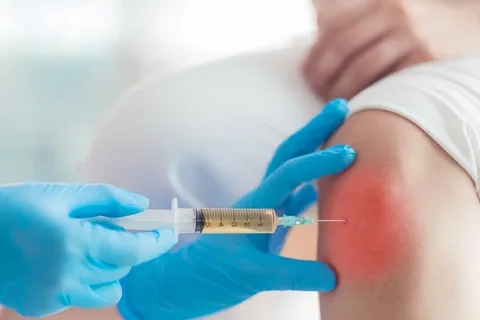Injections are one of the most commonly used methods in medicine to administer various substances into the body. Whether for vaccines, medication, or even aesthetic treatments, injections play a critical role in healthcare. In this article, we will explore what injections are, their various types, and how they are used in medical treatments.
What Are Injections?
Injections involve the use of a syringe and needle to deliver a substance directly into the body. The substance can be a liquid medication, vaccine, or other necessary fluid. This method is often preferred because it allows the medication to be delivered quickly and directly into the bloodstream or targeted tissues, bypassing the digestive system.
Types of Injections
There are several different types of injections, each suited for specific medical needs:
- Intramuscular Injections (IM) – These injections are administered into a muscle, typically in the upper arm, thigh, or buttocks. They are often used for vaccines or medications that need to be absorbed slowly.
- Subcutaneous Injections (SC) – These injections are delivered just under the skin and are commonly used for insulin administration and certain vaccines.
- Intravenous Injections (IV) – Given directly into a vein, intravenous injections provide rapid delivery of medications, fluids, or nutrients, making them ideal for emergency situations.
- Intradermal Injections – These are injected into the skin, often used for allergy testing or tuberculosis screening.
Why Are Injections Important?
Injections are important for a variety of reasons. They allow for faster absorption of medication into the bloodstream, which can be critical in emergencies. They also ensure that the medication is delivered in the most efficient manner, especially for substances that may not be absorbed well through the digestive tract.
Moreover, injections are used for many different types of treatments, such as:
- Pain management
- Immunization (vaccines)
- Hormonal therapy
- Allergy treatments
- Chemotherapy for cancer patients
Safety and Precautions
While injections are a safe and effective treatment method, it’s crucial to follow proper procedures to avoid complications. Medical professionals are trained to ensure injections are given with precision, using sterile equipment and proper techniques. Patients should always ensure that they are being injected in a clean and safe environment to reduce the risk of infections or adverse reactions.
Conclusion
Injections are a vital tool in modern medicine, providing a quick and effective way to deliver treatment. Whether for routine vaccinations, managing chronic conditions, or treating acute illnesses, injections play a crucial role in patient care. Understanding the different types of injections and their uses helps ensure that this medical procedure continues to save lives and improve health outcomes across the world.


